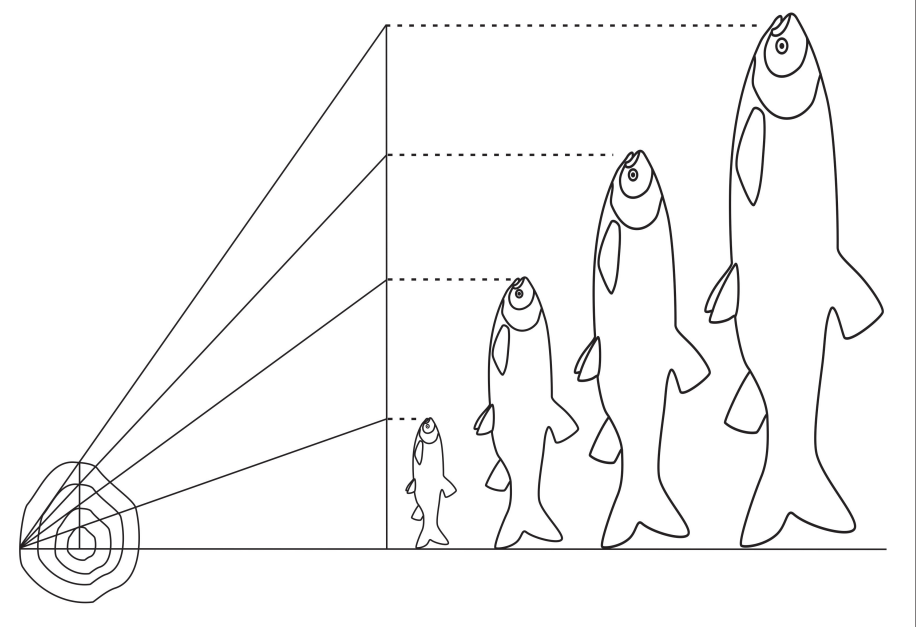Why and how we estimate the growth rate of fish?
Practical aspect: Does the preservative size of barbel Barbus barbus is defined properly in Poland?
DOI:
https://doi.org/10.5604/01.3001.0010.7606Keywords:
growth rate of fish, barbel, Barbus barbus, protective size, Einar Lea method, back-calculation methodAbstract
Based on fish scales, we can determine the age of fish, as well as the rate of growth of the individual from birth until the time of capture. The paper presents a method for determining the rate of growth of fish and the example of their practical application to determine the protective size limit of fish, on the example of barbel in Poland. The available data on the growth rate of barbel in Polish rivers, based on 12 field surveys carried out in 1948–2004 was compared. The growth rate of barbel in different habitats is variable. Barbel growth depends on the size of the river and thermal conditions. The results were compared with maturation age of barbel. Protective size limit definited for barbel, which is 40 cm, is correct. All populations of barbel can reproduce at least once before they reach the preservative size. Most of the populations may reproduce at least two or three times.
Downloads
References
A. Boroń, 2000. Brzana Barbus barbus, W: Brylińska M. (red.) Ryby słodkowodne Polski. PWN, Warszawa 2000, 186–191. Google Scholar
M. Brylińska. Ryby słodkowodne Polski. 2000, PWN, Warszawa 521s. Google Scholar
M. Iwaszkiewicz. Rocz. WSR Poznań, 1963, 17, 144–150. Google Scholar
M. Jelonek, P. Epler, M. Klich, F. Kądziołka, Rocz. Nauk. Zoot., Supl., 2003, 17/2, 647–650. Google Scholar
M. Klich, M. Jelonek, P. Piątek, Suppl. ad Acta Hydrobiol., 2003, 6, 3–9. Google Scholar
M. Klich, 2004. Tempo wzrostu i struktura wiekowa wybranych gatunków ryb w Górnej Wiśle. Growth rate and age structure of chosen fish species in the Upper Vistula River. W: Żurek R. (red.). Ichtiofauna i status ekologiczny wód Wisły, Raby, Dunajca i Wisłoki, IOP/ZBE, Kraków: pp 208, ISBN 83–918, 914–2–9, 109 –134. Google Scholar
W. Kopiejewska, Zesz. Nauk. ART. Olsztyn, Ochr. Wód i Ryb. Śródl., 1979, 10, 227–236. Google Scholar
K. Opuszyński, Biologia ryb, Warszawa, 1979, PWRiL, 288–318. Google Scholar
PZW – oficjalna witryna Polskiego Związku Wędkarskiego: www.pzw.org.pl (dostęp 02.02.2017r). Google Scholar
H. Rolik, Fragm. Faun., 1971, 17, 559–584. Google Scholar
Rozporządzenie Ministra Rolnictwa i Rozwoju Wsi z dnia 12 listopada 2001 r. w sprawie połowu ryb oraz warunków chowu, hodowli i połowu innych organizmów żyjących w wodzie. Dz.U. 2001 nr 138 poz. 1559. Google Scholar
K. Starmach, Prz. Rol.–Leś., PAU, 1948, 39, 1–42. Google Scholar
K. Starmach, Pol. Arch. Hydrobiol., 1956, 3, 307–332. Google Scholar
A. Witkowski, J. Kotusz, M. Przybylski i in., Chrońmy Przyrodę Ojczystą, 2009, 65(1), 33–52. Google Scholar
J. Zawisza, Rocz. Nauk. Rol. 1951, 57, 237–271. Google Scholar

Downloads
Published
How to Cite
Issue
Section
License
Copyright (c) 2017 University of Applied Sciences in Tarnow, Poland & Author

This work is licensed under a Creative Commons Attribution-NonCommercial 4.0 International License.



